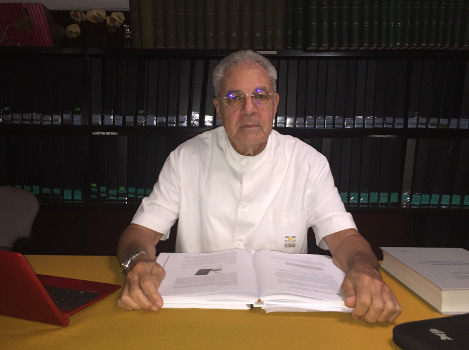Pedro Clarós, full academician and vice president of the Royal European Academy of Doctors-Barcelona 1914 (RAED), and Francisco López Muñoz, full academician of the RAED, have jointly developed the study “Consideraciones sobre el do de pecho” (Considerations on high C), which will be published in the next issue of Tribuna Plural, the scientific journal of the RAED. Renowned medical specialists, both academicians review in their work the different registers used by the singer to focus on what they prefer to call the do in full voice of the tenor, a striking note when intoned accompanied by a sustained vibrato that transmits strength and triumph.
Without being the most acute note in the register of the tenor, high C is emitted with the full voice, without using the falsetto technique. Although, as Clarós and López Muñoz point out, in the voice of the tenor the note “doesn’t belong to the chest registry, but really is a so-called head registry. With a good technique, the passage from the chest registry to the head is barely noticeable by the public”.
Because, as the work points out, all the singers have three different registers: one more serious, one intermediate and one more acute. “When a singer moves from one of these registers to another (this is what we call passaggio), he should try not to notice the change in color of the voice, a good tenor must have, from the first lowest note he emits to the Higher than it is able to emit, the same quality and color of the voice, so that to the audience its voice sounds to him like a totality in all the amplitude of his registry”, explain the academicians.
“Clinically we can demonstrate -they continue-, by means of magnetic resonance images of the oral and cervical cavity, that the mechanism of the mixed technique of chest and head consists in enlarging the space behind the palate and moving the vocal organ, larynx, upwards, and the voice acquires a wider range, that is, leaving the larynx completely relaxed and without contracture”. Among the tenors that have best known how to interpret this do in full voice, the academicians point to figures such as Luciano Pavarotti, Alfredo Kraus, Juan Diego Flórez or Javier Camarena.
- Dr. Pedro Clarós
- Dr. Francisco López




